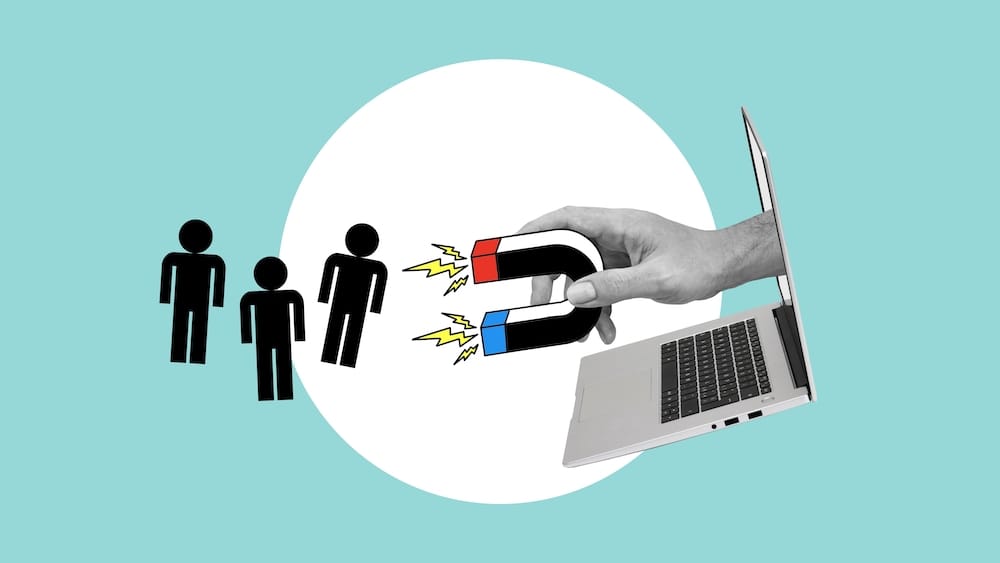
Posted in: CRM Success
11 CRM Metrics You Should Be Monitoring
Customer relationship management (CRM) metrics are essential for businesses aiming to optimize their customer interactions and enhance overall performance. By monitoring these metrics, companies can make informed decisions, tailor marketing strategies, and improve customer satisfaction. Effective use of these metrics can lead to better decision-making, optimized marketing strategies, and improved business outcomes. In this guide, we will explore 11 crucial metrics that every business should be tracking to ensure they are getting the most out of their CRM systems.
The Importance of Customer Relationship Management (CRM)
Customer relationship management plays a vital role in managing a company’s interactions with current and potential clients. These systems help businesses streamline processes, improve customer relationships, and increase retention and sales growth. By centralizing customer information, CRM platforms enable companies to provide personalized experiences, which can lead to increased loyalty and satisfaction.
CRM systems also facilitate communication and collaboration across different departments, ensuring that everyone has access to up-to-date customer information. This unified approach allows businesses to respond more quickly to customer inquiries and provide a higher level of service.
Defining Customer Relationship Management

Customer relationship management is a strategy and technology used by companies to manage and analyze client interactions and data throughout the customer lifecycle. The goal of CRM is to improve service relationships, assist in client retention, and drive sales growth. These systems compile data from various communication channels, including the company’s website, telephone, email, live chat, marketing materials, and social media.
A well-implemented CRM system provides a 360-degree view of the customer, allowing businesses to understand their needs, preferences, and behaviors better. This comprehensive understanding enables companies to tailor their marketing efforts, improve customer service, and ultimately increase sales and loyalty.
Benefits of Implementing CRM
There are several benefits of implementing a CRM. It helps increase sales by managing leads and opportunities more effectively. These platforms also improve client retention by providing insights into customer behavior and preferences, allowing for more personalized service. Additionally, CRM enhances satisfaction by streamlining processes and providing consistent service. Overall, a well-implemented system can lead to higher efficiency and profitability for companies.
Moreover, these systems can automate routine tasks, freeing up employees to focus on more strategic activities. Systems like LinkPoint360 enhance CRM productivity, such as email marketing campaigns and follow-up reminders, and ensure that no customer interaction falls through the cracks, leading to a more organized and proactive approach to customer management.
Examples of CRM Metrics
Monitoring specific metrics is crucial for gauging the effectiveness of customer relationship management strategies. These metrics help businesses understand how well their systems are performing and where improvements can be made. By tracking the right metrics, companies can ensure they are making the most of their CRM investments.
CRM KPIs

Key performance indicators (KPIs) are essential metrics used to evaluate the success and efficiency of CRM initiatives. These indicators help businesses measure their progress towards achieving their goals. KPIs provide a clear picture of how well the customer relationship management system is functioning and whether it is meeting the company’s objectives.
1. Customer Acquisition Cost (CAC)
Customer acquisition cost (CAC) measures the cost of acquiring a new client. This metric is important for understanding the cost efficiency of marketing and sales efforts. Customer relationship management platforms can help track and reduce CAC by optimizing marketing campaigns and sales processes.
Reducing CAC is crucial for improving the overall profitability of the business. By analyzing CAC, companies can identify which marketing channels and campaigns are most effective at attracting new customers and allocate their budgets accordingly. For example, if digital advertising campaigns have a lower CAC compared to traditional marketing methods, a company might decide to invest more in online marketing.
2. Sales Growth

Sales growth is a key indicator of the success of CRM initiatives. It measures the increase in sales over a specific period. Customer relationship management tools track sales performance and provide insights into CRM trends and patterns, helping businesses identify successful strategies and areas for improvement.
Monitoring sales growth helps businesses understand the impact of their CRM efforts on revenue generation. For instance, if a company implements a new CRM strategy and sees a significant increase in sales growth, it can conclude that the strategy is effective. Conversely, if sales growth stagnates or declines, the company may need to reassess and adjust its approach.
3. Average Revenue Per User (ARPU)
Average revenue per user (ARPU) assesses the revenue generated per customer. This metric helps businesses understand the value each client brings. CRM platforms provide insights into ARPU by analyzing customer spending patterns and identifying opportunities for upselling and cross-selling.
Increasing ARPU is a key goal for many businesses, as it directly impacts profitability. By leveraging the platform’s data, companies can identify high-value customers and tailor their marketing efforts to encourage additional purchases. For example, a CRM system might reveal that customers who purchase a specific product are also likely to buy complementary products. This insight can inform targeted marketing campaigns aimed at increasing ARPU.
4. Customer Satisfaction Metrics

Tracking customer satisfaction metrics is crucial for measuring the effectiveness of customer relationship management efforts. These metrics provide insights into client experiences and highlight areas for improvement. High levels of customer satisfaction are often linked to increased loyalty, positive word-of-mouth, and higher sales.
5. Customer Lifetime Value (CLV)
Customer lifetime value (CLV) measures the total revenue a business can expect from a client over their lifetime. CRM tools calculate CLV and help enhance it by fostering long-term customer relationships through personalized service and targeted marketing.
Understanding CLV allows businesses to identify their most valuable customers and focus their efforts on retaining them. For example, if a company knows that a certain segment of customers has a high CLV, it can create loyalty programs or exclusive offers to ensure these customers remain engaged and continue to generate revenue over the long term.
6. Customer Effort Score

Customer effort score (CES) measures the ease of customer interactions with a company. This metric indicates how much effort clients have to put in to get their issues resolved. Customer relationship management platforms can help reduce client effort by streamlining processes and improving service quality.
Reducing customer effort is critical for enhancing the overall customer experience. A high CES indicates that customers find it difficult to interact with the company, which can lead to frustration and churn. By identifying areas where customers encounter difficulties, businesses can make targeted improvements to simplify interactions and increase satisfaction.
7. Net Promoter Score (NPS)
Net promoter score (NPS) gauges client loyalty and their likelihood to recommend a business. CRM systems track and improve NPS by identifying and addressing customer concerns, leading to higher satisfaction and loyalty.
NPS is a powerful metric for understanding customer loyalty and the potential for organic growth through referrals. A high NPS suggests that customers are highly satisfied and willing to promote the business to others, while a low NPS indicates areas that need improvement. By regularly monitoring NPS, companies can ensure they are meeting customer expectations and fostering loyalty.
8. Average Resolution Time
Average resolution time measures the efficiency of resolving customer issues. This metric indicates how quickly client queries or problems are resolved. Customer relationship management tools track resolution times, helping businesses identify areas for improvement and enhance client satisfaction.
A shorter average resolution time is often associated with higher customer satisfaction. Customers expect quick and efficient responses to their inquiries and issues. By monitoring this metric, businesses can identify bottlenecks in their support processes and implement changes to improve response times and overall service quality.
Customer Retention Metrics

Tracking customer retention metrics is essential for ensuring ongoing client loyalty and engagement. These platforms play a crucial role in monitoring and enhancing customer retention. Retaining existing customers is often more cost-effective than acquiring new ones, making retention metrics vital for long-term success.
9. Customer Churn Rate
Customer churn rate measures the percentage of clients who stop doing business with a company over a specific period. This metric impacts business growth and stability. CRM platforms help reduce churn by identifying at-risk customers and improving retention strategies.
Reducing churn is critical for maintaining a stable customer base and ensuring steady revenue. By analyzing churn data, businesses can identify patterns and causes of customer attrition and develop targeted strategies to retain customers. For example, if churn is high among a particular segment, the company can investigate the reasons and take corrective actions to improve retention.
10. Rate of Renewal
Rate of renewal is relevant to subscription-based businesses and measures the percentage of clients who renew their subscriptions. CRM tools track renewal rates and help develop strategies to improve customer retention and satisfaction. A high renewal rate indicates strong customer loyalty and satisfaction with the subscription service. CRM platforms can provide insights into why customers choose to renew or cancel their subscriptions, allowing businesses to make data-driven decisions.
By understanding the factors that influence renewal rates, companies can implement targeted initiatives to enhance the customer experience, such as personalized offers, improved customer support, and value-added services.
11. Customer Retention Rate

Customer retention rate reflects a company’s ability to retain clients over time. CRM platforms monitor and boost retention rates by enhancing client satisfaction and loyalty through personalized interactions and effective follow-ups.
A high retention rate signifies that customers are consistently choosing to continue their relationship with the business, which is crucial for long-term growth and stability. CRM systems help identify patterns and behaviors that lead to higher retention, enabling companies to replicate successful strategies across their customer base. Additionally, by analyzing retention data, businesses can proactively address issues that may lead to customer attrition, thereby maintaining a loyal customer base.
By leveraging CRM insights, businesses can allocate their resources more efficiently, focusing on high-impact retention activities that deliver the best results. Cost-effective retention strategies may include loyalty programs, regular customer engagement, and ongoing value delivery.
How to Leverage CRM Insights

Using data from CRM systems to gain insights into customer behavior and business performance is crucial for making informed decisions. Leveraging these insights can drive strategic decisions, improve client relationships, and enhance overall business outcomes. CRM insights allow businesses to tailor their marketing efforts, develop more effective sales strategies, and provide superior customer service.
By understanding customer preferences, behaviors, and feedback, companies can create more personalized experiences that resonate with their audience. This data-driven approach ensures that every customer interaction is meaningful and adds value, fostering stronger relationships and higher customer satisfaction.
Identify Key Trends
Identifying key trends from CRM data is essential for making informed business decisions. Recognizing trends helps businesses adapt their customer relationship management strategies to better meet customer needs and improve performance.
Developing Action Plans
Developing action plans based on CRM insights is crucial for improving client relationships and business outcomes. These platforms play a vital role in monitoring the effectiveness of these plans and making necessary adjustments.
Setting Goals and Objectives
Setting clear goals and objectives guides CRM strategies and measures success. CRM tools help track progress towards these goals, ensuring businesses stay on course and achieve their desired outcomes.
Optimize Your CRM with LinkPoint360

LinkPoint360 enhances the effectiveness of CRM systems by providing seamless email integration, which helps streamline communication and improve data accuracy. By using LinkPoint360, businesses can ensure that their CRM systems are fully optimized, leading to better client interactions and improved business performance.
This comprehensive view of customer interactions enables more informed decision-making and enhances the ability to deliver personalized service. Additionally, LinkPoint360’s tools help in identifying follow-up opportunities and maintaining consistent communication with clients, ultimately contributing to higher customer satisfaction and loyalty. Request a demo today to experience how your team can take your CRM ROI to the next level.



